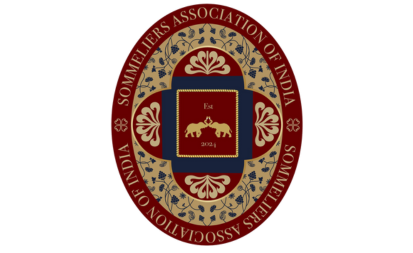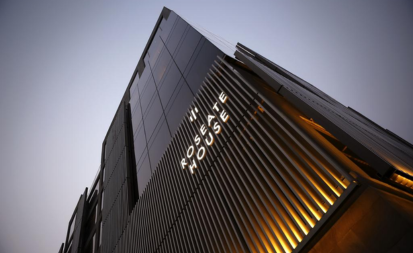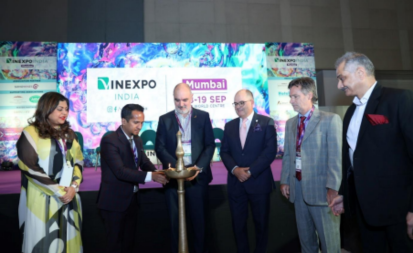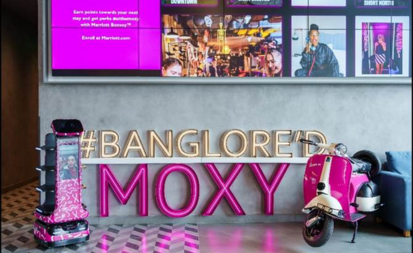It’s Not just the Lifestyle Preference that is Pushing People Towards Wine but also the One Set of Generations
Stephen D’souza, General Manager & Associate Vice President, Chalet Cluster Operations Major factors behind the growth of Wine tourism in India The burgeoning growth of wine tourism in India can be attributed to several key factors. These

Stephen D’souza, General Manager & Associate Vice President, Chalet Cluster Operations
Major factors behind the growth of Wine tourism in India
The burgeoning growth of wine tourism in India can be attributed to several key factors. These include the rising disposable income of Indian consumers, a greater exposure to Western culture, and an increase in the number of foreign tourists visiting the country.
Over the past half-decade, wine tourism has experienced a significant surge in popularity within India. Indians have exhibited a growing interest in wine, with people of all ages, including millennials, actively embracing what was once considered a traditional adult pastime. There is a genuine curiosity about wines, encompassing the desire to understand which wine complements specific types of food, how to properly pour and serve it, and how to fully relish the wine-tasting experience.
The concept of a “wine getaway” evokes images of opulence and Instagram-worthy moments. These destinations typically feature lavish accommodations, delectable cuisine that often incorporates local flavors as an added bonus, and expansive open spaces, making them an ideal choice for weekend retreats for couples or families.
Moreover, every prominent wine brand in India has recognized the value of engaging with their customers through wine tourism. Offering activities such as wine tours, grape stomping, food pairing sessions, and wine tastings serves as an excellent introduction to their diverse range of products.
Globally, wine tourism is acknowledged as a thriving niche within the tourism industry, and it has become increasingly vital for regions known for wine production. In India, wine brands have taken note of this trend, and vineyards are now being utilized not only for weekend getaways but also for hosting various events such as family gatherings, wedding receptions, and corporate outings and conferences. Additionally, annual festivals and events like The Sula Festival and The Great Grover Wine Stomp in Nashik, as well as The Great Grover Wine Festival in Bengaluru, have further enriched the repertoire of wine-related activities available to enthusiasts.
How has the placement / demand of wine in Hotels changed over time?
In the tourism industry, from the past couple of years there’s an interesting and counterintuitive trend. More and more industry leaders around the world are taking care of the wine, the category is important to us and we invest time and effort while selecting wines for our hotels.” Today in our industry we are taking the initiative to understand the different varieties, countries of origin, regions. There’s another trend that’s revolving in the market is for drinkers who are vegans, with the social trends and the millennial preference consumers are becoming aware of the vegan wine and a lot of vegan-only and vegan-friendly wines have been introduced in the sector,” It’s not just the lifestyle preference that is pushing people towards wine but also the one set of generations. Another thing which has changed the growing wine trends in the hospitality sector, is the growing travel plans of millennials. From different parts of the world,
the travel plans for a young crowd have certainly increased and with this increase in travel trends, the beverage consumption has changed tremendously.
Wine has become an essential part of the menu in today’s dining experience. What are the key factors in managing and serving the diners’ wine options?
In the tourism industry, there has been an intriguing and somewhat unexpected trend over the past few years. Across the globe, more and more leaders in the industry are placing a strong emphasis on wine, recognizing its significance and dedicating considerable time and effort to curating wine selections for their hotels. Today, within our industry, there is a proactive approach to comprehending the diverse array of wine varieties, their countries of origin, and the regions they hail from.
Another notable trend that has emerged in the market pertains to consumers who embrace veganism. In line with evolving social trends and the preferences of millennials, there is a growing awareness of vegan wines. Consequently, a multitude of wines that are either exclusively vegan or vegan-friendly have been introduced into the sector.
This shift towards wine is not solely attributable to lifestyle preferences but is also influenced by generational factors. Furthermore, the evolving wine trends within the hospitality sector can be attributed to the increased travel plans of millennials. The younger demographic’s heightened enthusiasm for travel from various parts of the world has led to a significant transformation in beverage consumption patterns.
According to you, how has the wine industry evolved over time in terms of supply as well as customer demand? How has it been impactful for your brand?
Wine tourism has emerged as a substantial industry, not only benefiting wineries but also the broader region. People are increasingly embracing the concept of wine tourism, highlighting the importance of cultivating a base of returning visitors to foster customer loyalty and enhance overall experiences.
In recent years, wine tourism has experienced significant growth and continues on this upward trajectory. Research has indicated that the success of a wine region can be attributed, in part, to deliberate event planning at wineries. This planning includes a balanced mix of enjoyable and educational activities. Furthermore, the appeal of the entire region plays a crucial role in attracting visitors. Wineries and wine trails should not operate in isolation when devising their marketing strategies; instead, they stand to benefit from collaborating with other industries present in the region, such as recreational tourism and music events. Such partnerships can further stimulate repeat tourism to the area, yielding optimal social and economic benefits.
How is wine at your brand (Hotel, restaurant or airline) playing an essential role in customer experience?
We have observed that guest satisfaction significantly increases when patrons feel they are part of an engaging and interactive experience, and this is further augmented when they acquire knowledge during their visit. Personalization remains a key focal point, as restaurant guests increasingly seek to curate their own dining experiences. Diners are placing a heightened emphasis on the holistic food and wine encounter.
One effective strategy for cultivating client loyalty is by organizing wine tastings and workshops within the restaurant. Additionally, hosting special events that showcase the new menu offerings in conjunction with the latest wine selections can be a powerful approach. These efforts can be actively promoted through social media channels, leveraging live video streaming on platforms like Instagram and Facebook. Furthermore, collaborating with wine influencers to discuss your wine offerings can amplify your reach and impact.
To capture the loyalty of the most discerning clients, it is crucial to provide a comprehensive experience. These clients tend to thoroughly assess the wine selection and its diversity. Subsequently, they delve into the information available about the wine offerings, displaying keen interest in the backstory of each bottle, the intricacies of the wine cellars, and any other intriguing details that can pleasantly surprise them. In this context, the role of the sommelier is of paramount importance.
—-
 English
English French
French German
German Italian
Italian




